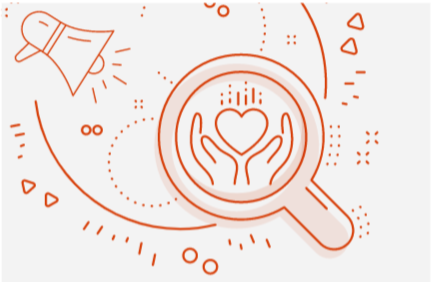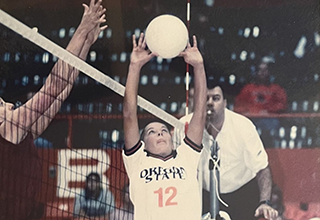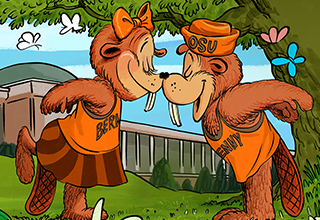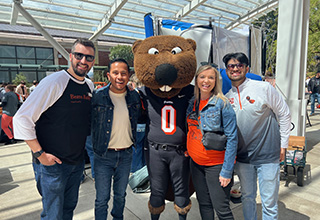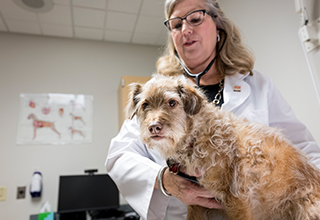OSU, A Love Story
By Katherine Cusumano
Illustrations by Zohar Lazar

Maybe the whorls of hormones adrift in the air are to blame. Or maybe it’s the sudden freedom away from home, or the sheer disorienting unfamiliarity of being at college — whatever the case, for many undergraduates, entering college also means joining that great human search for someone to hold.
Since the early 1900s at Oregon State, there’s even been a tree dedicated to the cause. In 1901, a gray poplar just southeast of Community Hall, formerly known as Benton Hall, became known as the Trysting Tree because students found it a relatively private place for after-hours rendezvous. (Maybe too private, the Daily Barometer reported in 1923 after the Board of Regents trained two bright lights beneath its branches: “The tree seemed to have magical effects on the students, especially in the springtime.”)
The name stuck. And though the gray poplar that remains is not the original — it cut down and replaced due to disease — the tree that still bears the title has watched over everything from romantic entanglements to proposals.
Perhaps it’s no surprise, then, that a campus with a landmark dedicated to student love has been both catalyst and backdrop for the never-ending drama of dating. Throughout Oregon State’s history, its places and practices have shaped and sparked countless love stories. This is a story about those stories.


In the beginning, it wasn’t always easy to find ways to fan romantic flames on campus. In fact, the university went to lengths to make it quite difficult.
“All communications between ladies and gentlemen on the College premises are expressly forbidden,” reads the 1882-1883 general catalog. Interactions between genders were socially and strictly regulated in Oregon, and the college campus was no different. So it remained for some 70 years to follow.
“It was the nature of society at the time — anything having to do with sex was just verboten,” says Larry Landis, former director of OSU’s Special Collections and Archives Research Center. “I think that extended to anything that could be construed as a romantic interaction between men and women who attended the college.”
Breaking those rules could have serious consequences, ranging from demerits (100 of which amounted to a dismissal) to outright expulsion. In 1926, George Oppen, who would become a Pulitzer Prize-winning poet, asked Mary Colby out. “We drove out into the country, sat and talked, made love, and talked until morning,” Mary writes in her autobiography, Meaning a Life. “I was expelled from the college for coming in past the dormitory curfew.” Consequences tended to be more severe for women students: George only faced suspension, but he chose to withdraw from school to remain with Mary.
The college soon softened its original stance, however, and began creating venues and events where students could socialize under supervision. Starting in 1897, sanctioned campus dances were especially important. These were often elaborate, rigorously produced and put on in collaboration with Oregon State’s military department. (At this time, all male students received military training.) Picture cadets in smart uniforms, women with dance cards — small booklets with space to pencil in the dance partner for each waltz or two-step or polka — tied round their wrists, and faculty chaperones keeping careful watch. Until around 1967, when dance cards fell out of use, they remained important keepsakes, serving as a written record of first dances and fateful nights.
“The Co-Ed Code offered advice for what to do if a swooning suitor showed up to express his love through song.”
In 1905 the first Greek organization, the fraternity Gamma Delta Phi, earned a permanent charter at OSU. Alpha Chi Omega followed as the university’s first sorority in 1915. Women were absolutely prohibited from going into fraternity houses without a chaperone, but fraternities and sororities co-hosted their own mixers and dances.
Over the following decades, dances multiplied and became more playful. Mortar Board, an honorary club for senior women, hosted an annual event called the Reversia Dance, in which “strong men shudder, play coy, and in general, act like they think the women have acted,” according to the 1953 yearbook. Women asked men to the dance, gifted them massive corsages that blossomed extravagantly over their lapels, and paid their dates’ way. “The purpose of this dance,” the yearbook continues, “is unknown to the men who attend, but everyone enjoys it just the same.”
And then there was “fussing” — slang for dating. The campus-wide obsession with dating is evidenced by the fact that the student directory itself was known the Fusser’s Guide. An analogue facebook long before there was Facebook, it contained the names, addresses, phone numbers and even, for a period, the marital status of everyone on campus. (In keeping with the theme, the covers of many in the 1940s came adorned with cupids and hearts.)
Most first meetings would have taken place publicly. Students didn’t have personal phones in their rooms, so prospective suitors had to figure out where the other person lived, call and request to speak to them. (You can imagine how giggles might have spread down the dormitory hall when a young woman was summoned to the phone.)
To understand the fateful matchups the book could produce, one need look no further than Ray Hewitt, ’71, and Janet Schamber, ’69. As winter break drew to a close in 1968, Hewitt paged through the Fusser’s Guide, calling girls who lived near his parents’ Idaho home to see if they might need a ride back to campus. The result? A 53-year-long (and counting) marriage.
The Fusser’s Guide kept its name into the ’70s, well after the term fell out of use. “That was just the name of the publication,” says Mary Jo (Casci-ato) Binker, ’73, who edited the Fusser’s Guide as a journalism and communications student. “No one I knew used that term to talk about dating.”
The idea that romantic intrigue would play out on campus, and warnings about how it might go wrong, were also baked into the student code of conduct. “LEST YOU FORGET,” proclaims the 1920 Rook Bible in its orientation for new students, “YOU MUST NEVER … Fuss at athletic events. Fuss on weeknights.” Apparently mixing dating and sports was especially off limits because it could distract from rooting for the Beavers.
The Co-Ed Code, a handbook for women students, gave guidance for how one might respond to romantic advances. “Now here’s the part of your ‘private aff air’ you’ve probably been dreaming about — dating,” says the 1949 handbook. It reeled off “popular boy-and-girl functions,” including lectures, movies, concerts, church events and dinners. Importantly, it offered advice for what to do if a swooning suitor showed up to express his love through song — namely, if it’s not your serenade, then mind your own business. Serenading was a very public part of certain Greek pinning ceremonies, in which a fraternity member gave his girlfriend a pin as an emblem of his devotion. (For decades, the Daily Barometer included a “Pins and Rings” column.)
“As soon as you hear a serenade, you should be absolutely quiet,” the Co-Ed Code instructs. “Turn out your lights at once.” What if it’s an “improperly conducted serenade,” perhaps with a singer drawing courage from copious amounts of alcohol? These “should receive an attitude of complete indifference in an effort to curb them.”

Sometimes, life at Oregon State aligned with — and was quickly changed by — larger, national social phenomena. Following World War II, the university experienced an influx of veterans and married students. Birth control was legalized
for married couples in 1965 and then for all Americans in 1972. College campuses became focal points for civil rights activism in the ’60s and ’70s. There was the Vietnam War and the countercultural movement. All of this had a profound
impact on student life. Codes of conduct and dress codes relaxed. Modesty-maintaining rules for women’s attire dropped from the student handbook in 1970, and co-ed dorms were established soon after.
“There were a lot of overhanging traditions that were kind of going by the wayside because it was a different era,” says Binker, who attended Oregon State from 1969 to 1973. The atmosphere trended toward giving women more agency, including
in their relationships; at the same time, she noticed that there was still strong pressure to couple up: “Even with all that broader political, social change,” she says, “the actual way things played out, people wanted to find somebody
and to get married.”
“How anyone can call love perverted or immoral is beyond me.”
It’s also worth pointing out the implicit assumption, demonstrated across a range of traditions and practices, that romantic relationships would develop between men and women largely excluding Oregon State’s queer students. Dating among men and women “was very public on purpose,” said Natalia Fernandez, curator of the OSU Queer Archives, “whereas in this community, it was private for so many reasons, whether it was people were being actively discriminated against [or] people were still figuring out identities for themselves.”
After all, consensual same-sex sexual activity was illegal in Oregon until 1972. Well into the ’90s, the decade of “Don’t Ask, Don’t Tell” and the Defense of Marriage Act, gay rights were still furiously debated in op-eds in the Daily Barometer: “How anyone can call love perverted or immoral is beyond me,” one student wrote in response to a conservative piece published in 1992. “Who cares whether people in love are of opposite genders or the same?”
But queer students began carving out more space for themselves on campus in the ’70s. With the emergence of organized national civil rights, women’s rights and gay rights movements, students were increasingly organizing around identity, according to Cindy Konrad, the director of Oregon State’s Pride Center. In 1973, the Women’s Center opened and became “a real focal point for LGBT people,” Konrad says; four years later, students established the first LGBT club to gain university recognition.
In 1999, Carolyn and Ellen (Weigant) Dishman, who had recently begun dating, started attending meetings of OSU’s queer student group, soon known as the Rainbow Continuum. After a meeting, they took note each time they spotted other gay students — taking comfort in seeing their relationship reflected elsewhere in the student body. “It was like a celebrity sighting on campus for us,” Ellen says. “Like, ‘There’s somebody like me right there.’”
In 2000, members of the Rainbow Continuum began lobbying to create the Queer Resource Center. On March 14, 2001, more than 350 people piled into the Memorial Union ballroom to observe a Student Fees Committee hearing. The committee voted unanimously in favor of the proposal, approving a $7,000 budget. In 2004, the building became the Pride Center.
The center, and queer student clubs before it, were part of an effort by students to make these relationships more visible, and to normalize them on campus. In the process, it became a place not only for community and connection, but also where love sometimes
bloomed, Konrad says.

Before social media, there was the Daily Barometer. In the ’70s, and to an even greater extent in the ’80s, the newspaper published personal ads in its classified section. Students bought space to trade coy, romantic missives,
addressing each other by initials or nicknames and even writing rhyming couplets. They might profess admiration or slyly reference a recent date.
“Dating apps in general, they’re everywhere. I don’t think there’s a whole lot of meeting people organically.”
“It’s kind of public flirting,” says Kevin Miller, ’78, the former editor of the Oregon Stater and the Daily Barometer. “Imagine if there was a Tinder, but you had to post on a big wall in the middle of the campus.”
The trend reached a fever pitch around Valentine’s Day. One night, a young man desperate for the right words sought help from several Barometer staff members, Miller recalls. As the deadline for the Feb. 14 edition approached, the man paced the newspaper’s office — his fate in the writers’ hands.
The results of labors of love like this live forever in the Barometer archives. Witness February 1982, from Sociology Tom to Lori Johnson: “I think you’re sweet, I think you’re cute, I’m lousy at poetry, so how about dinner?” February 1983, amid two full pages of personal ads, from a secret admirer to John T. Green: “From time to time / Our paths have crossed / One look at you and / My heart was lost.” February 1984, in “Love & Bodily Fondleness” from RB to Muff: “It’s not enough to be my creampuff, be my Valentine too!”
Already, courtship had gone from something conducted entirely in public, under supervision, to something that was more dispersed and individual. Formal dances had been supplanted as a main mode of socializing; instead, students were more likely to meet and form relationships — romantic or otherwise — in clubs, classes or study groups. Future spouses Lori, ’85, and Jen-Hsun Huang, ’84, ’09 (Hon. Ph.D.), now the president and CEO of the tech company NVIDIA, met as lab partners. “I tried to impress her — not with my looks, of course, but with my strong capability to complete homework,” Huang told the New Yorker in 2023.
The advent of the internet wrought another change. It “provided opportunities for those who were more introverted, who needed another communication vehicle through which they can express themselves,” says Larry Roper, VP for Student Affairs at Oregon State from 1995 to 2014.
“It’s hard to recall the large number of students with whom I spoke who had never dated before they came to college,” Roper says. With a laugh, he adds: “It was always this, ‘How do I meet somebody? And, how do I ask somebody to go on a date with me?’ The expectation was, if I’m ever going to find anybody, this is where I have to do it.”
Though a fall 2023 survey by Axios and Generation Lab found that a majority of college-age students in relationships met in person, rather than through a screen, Emma Coke says that in her experience, dating apps rule on campus. “They’re everywhere,” says Coke, the editor-in-chief of the Beaver’s Digest, Oregon State’s undergraduate lifestyle magazine. “I don’t think there’s a whole lot of meeting people organically.”
Sometimes, she says, her friends ask her to “play Tinder” — swiping through the app on their behalf, since she is already in a relationship. This February, the Beaver’s Digest published an issue devoted to romantic relationships, including stories about hookup culture (“still super prevalent”), dating long-distance, sexual health and more.

Many students see college as “the time when they’re on their own and they have to create their own life and their own future,” Roper says. “For some people, a partner is part of that.”
No matter how they started, lasting love stories whose opening lines were written in the student years are now interwoven with OSU’s history, as evidenced by the tens of thousands of couples in the alumni database — as well as alumni who reconnect later in life.
This is an OSU love story: Its protagonists are roommates and lab partners, members of study groups, dance classes and extracurricular field trips. It’s the shy approach and the brave request that a potential partner hold a spot on their figurative dance card for you. It’s to nestle beneath the boughs of the Trysting Tree, on the side away from the bright lights, and to thumb the pages of the Fusser’s Guide, searching for the one who caught your gaze.


George and Mary in 1977.
(Photo credit: Stephen Johnson)
George and Mary Oppen
“Parked in the fields / All night / So many years ago, / We saw / A lake beside us / When the moon rose.” So begins “The Forms of Love,” the poet George Oppen’s lyrical account of his first date with Mary Colby, whom he met in an English class at Oregon State College in 1926. They stayed out all night. Upon returning to campus in the morning, having broken curfew, Mary was expelled. George was merely suspended, but he, too, left the college; they moved to San Francisco, married, and remained together for the rest of their lives. They hitchhiked across the United States; started a small press in France; organized unions during the Great Depression; and wrote. In 1969, George received the Pulitzer Prize for Poetry for his collection Of Being Numerous. “Young George and Mary, or George and Mary now — so long as it is George and Mary it is life as I have known and lived it,” Mary writes in Meaning a Life, “as we have known and lived it.”

David and Mary Lou Wagner
When David and Mary Lou Wagner married in 2017, it was not the first time they had gotten together. They actually first dated back in 1955, when Mary Lou, ’57, was a dance instructor at the Memorial Union and David, ’56, was her student. Things seemed to be going well — until the summer, when something went sideways. David, who had gone home to Wilsonville, called Mary Lou down in Boulder, Colorado, and when she came on the line, “It was a flat phone call,” he says. “It was like, ‘Huh, what happened?’” The relationship was over, but he never forgot her. More than 50 years later, after they each had been married twice, David reached out, reigniting their old flame. At first, they just spent hours on the phone; David called Mary Lou many mornings on his commute to Salem, where he works as a physician. (When David told his sons that he was dating Mary Lou, they were ecstatic. “One of them almost knocked me over,” he says.) Seven years ago, they married — becoming each other’s third spouse. Asked what had changed in their relationship more than 50 years on, David says, “No more flat phone calls.” They still live up in Wilsonville, on the site of David’s family farm. And they’re regular attendees at Oregon State baseball games.

Ellen and Carolyn Dishman
It was about a week into the winter term of their freshman year. Ellen Weigant and Carolyn Dishman had just moved in together — as roommates — when they realized there was a spark. “We spent about a term being really good friends,” Ellen says. “We realized we’d sort of already been dating and had just been in denial.” This made things a little complicated: neither Ellen nor Carolyn had been especially aware that she was queer, and the late ’90s campus climate was not especially welcoming of same-sex relationships. Eventually, they became leading figures in the movement to establish a queer cultural center on campus. “A lot of people were invested in our relationship,” Ellen says. “I do think that it brought us closer together to work so hard to accomplish something.” It must have helped fuel their determination to marry, too, which they did four separate times due to the vicissitudes of Oregon same-sex marriage laws. In 2003, they exchanged vows for the first time. A year later, on their lunch break, they applied for a marriage license from the county — which was voided not long after by a constitutional amendment. In 2008, sweeping domestic partnership legislation went into effect, allowing them to marry for a third time and for Carolyn to be listed as the second parent of the child they had in 2011. Finally, in 2014, after the Oregon Supreme Court overturned the earlier constitutional amendment, Ellen and Carolyn got married again. “That one stuck,” Ellen says.

Heather and Sam Davidson
In October 1979, Sam Davidson, ’83, posted a notice in the corridor of Bloss Hall: He would draw your portrait for $25. Heather Glasgow, ’82, took him up on the offer. It was a good deal: They sat in Sam’s room, talking and listening to Bruce Springsteen’s Greetings from Asbury Park, N.J. Sam was impressed that she knew the record. They became friends — and eventually dated and got engaged. “We were happily in love for about six months and then I messed things up,” Heather says. “I was young and immature, not ready for marriage, and panicked, breaking the whole thing off.” Nearly 30 years later, a mutual friend suggested that Heather should try to track Sam down. She did, with a birthday card. He replied with his phone number. Smash cut to the next summer, when they married — “best friends and soulmates reunited,” Heather says.

Kameron and Hannah Kadooka
Kameron Kadooka, ’12, hadn’t officially started his freshman year at Oregon State, but he already had a crush. The setting was McAlexander Fieldhouse; the object of his affection, Hannah McMahon, ’13, a peer in the outdoor leadership program Footsteps. Throughout his first year, they spent hours together as friends — including an outing to Waldo Hall to hunt for the residence’s famed ghost. “Hannah ended up giving me a fat lip after I tried to scare her,” Kameron says. It took a while, but they finally started dating during senior year. Later, he proposed to her in McAlexander. “I thought it was fitting to start the rest of our lives together, right where it all started,” Kameron says.

Christian Matheis and Isaac Magana
“Instantly, I was just kind of awestruck,” says Christian Matheis, ’01, M.A. ’04, recalling the first time he met Isaac Magana, ’04, on the fourth floor of Bloss Hall in the fall of 1999. Isaac, on the other hand, had no idea Christian was interested: “I was completely oblivious,” he says. Over the next few months, though, they started devising more excuses to see each other — Christian inviting Isaac on one errand or another, and vice versa. Christian was drawn to Isaac’s “quick wit,” and the way Isaac balanced his “pretty strong personality.” They shared a devotion to campus life and politics, too, and together became part of the effort to establish OSU’s Queer Resource Center. In early 2008, when Oregon began registering same-sex domestic partnerships, Isaac and Christian were first in line. They became the first domestic partnership in Benton County, and, due to administrative issues in Multnomah County, possibly in the entire state. Later, they chose not to marry: “Too big for marriage,” Christian says.

Nancy Ford Buechler and Gregory Buechler
Picture this: a rainy December evening, typical of western Oregon winter, 1982. Nancy Ford, ’85, is waiting in her all-women’s dorm for her floor’s scheduled meeting with residents of an all-men’s dorm for what they called a “Cinderella Dinner.” “The ladies participating threw a shoe into a box,” Nancy explains, “which was dutifully carried across the street where your dinner date was based on who chose your shoe.” That night, Nancy, then a sophomore, was wearing cowboy boots. Gregory Buechler, ’85, spotted the boot amid all the tennis shoes and was intrigued. They talked all through dinner. They have been married for 38 years.

Chad and Pamela Parlow
The first time Chad Parlow, ’99, asked out Pamela Perkins, ’00, to whom he’s now been married for 20 years, it didn’t go so well. “Would you like to go get a coffee?” he asked. “I don’t like coffee,” she replied. Undeterred, Chad countered: “You can get something else to drink besides coffee.” Pamela still didn’t bite. “I have a drink right here,” she said. Chad trudged, discouraged, back to his dorm — but when he saw her in the hallway a week later, he thought he’d try one more time. He invited her to a party; this time, she said yes. As an engineer, she’s “nothing if not literal,” Chad says now. “She didn’t realize I was trying to ‘ask her out.’”
